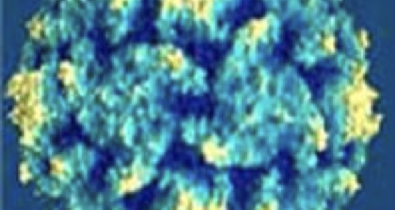MONDAY DECEMBER 12, 2005
SIMULATIONS OF EPSTEIN-BARR VIRUS INFECTION

This is a joint work with K.A. Duca, A. Jarrah and R. Laubenbacher (Virginia Bioinformatics Institute at Virginia Tech, Blacksburg VA, USA), and K. Luzuriaga, D. Hochberg and D.A. Thorley-Lawson (Department of Pathology, Tufts University School of Medicine, Boston MA, USA)
Motivation: Epstein-Barr virus (EBV) infects more than 90% of humans benignly for life but can be associated with tumors. It is a uniquely human pathogen that is amenable to quantitative analysis; however, there is no applicable animal model. Computer models may provide a virtual environment to perform experiments not possible in human volunteers.
We report the application of a relatively simple stochastic cellular automaton to the modeling of EBV infection. Infected B-cell dynamics in the acute and chronic phases of infection correspond well to clinical data including the establishment of a long term persistent infection (up to 10 years) that is absolutely dependent on access of latently infected B cells to the peripheral pool where they are not subject to immunosurveillance. In the absence of this compartment the infection is cleared.
F. Castiglione, K.A. Duca, A. Jarrah, R. Laubenbacher, K. Luzuriaga, D. Hochberg and D.A. Thorley-Lawson. Simulating Epstein Barr Virus Infection with C-ImmSim.
Bioinformatics, 23: 1371-1377. (2007)
Online: doi: 10.1093/bioinformatics/btm044
SYSTEM